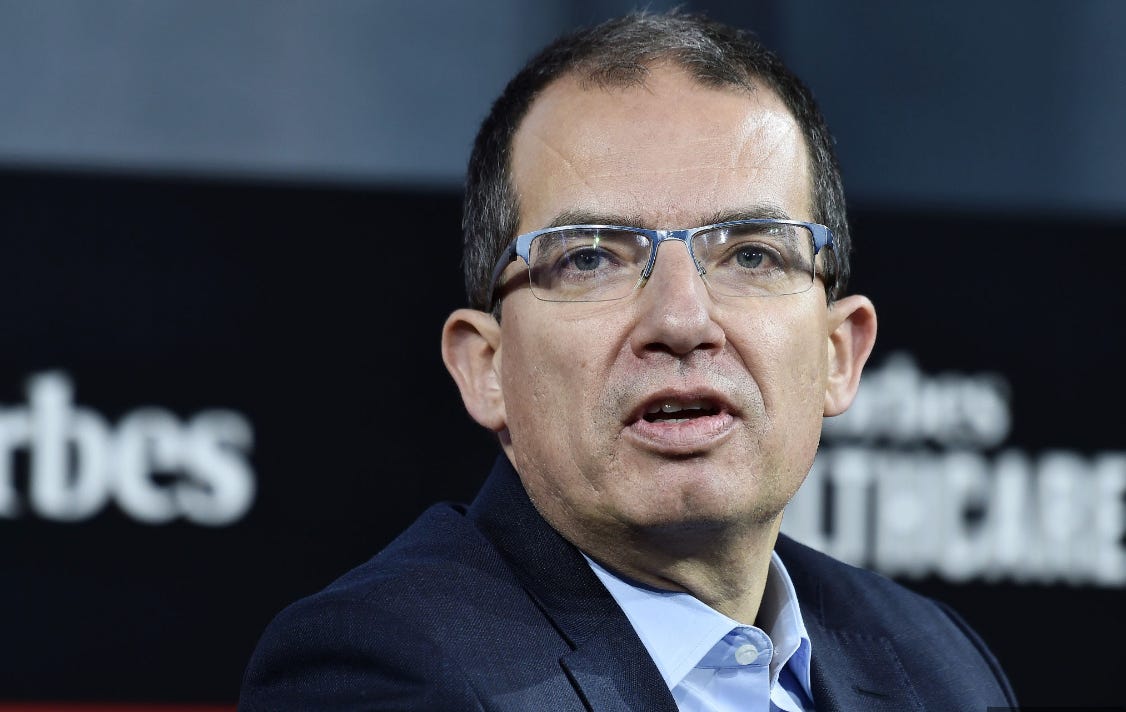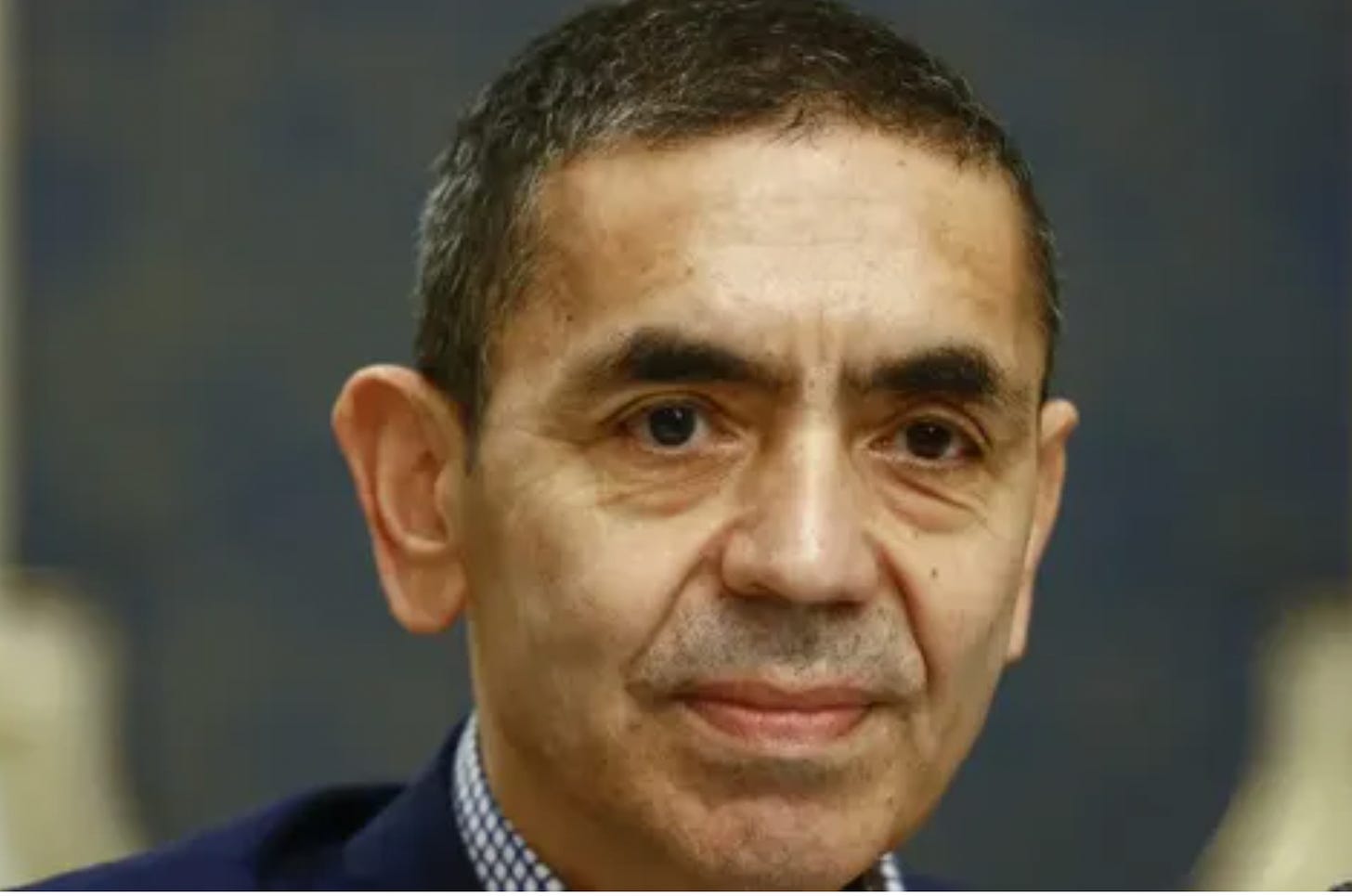Elizabeth Holmes Gets Eleven-Year Sentence for Theranos Fraud
The company promised a"blood testing revolution." Eight years later, Moderna and BioNTech promised to revolutionize vaccines with mRNA technology.
By John Leake
Yesterday I wrote about the FTX scandal, which involves a thirty-year-old living in the Bahamas, usually clad in shorts and flip-flops, who received billions from people all over the world with the promise he would make them rich by investing it in crypto currency. Nobody understood how exactly he was making billions for himself, and he never tried to elucidate it. In spite of no one having the foggiest notion about what he was doing, he was hailed as “this generation’s JP Morgan.”
The sudden fall of Sam Bankman-Fried coincided with the sentencing of former Theranos CEO, Elizabeth Holmes, who was ordered to serve 11 years in prison for defrauding investors of billions. Like Bankman-Fried, Elizabeth Holmes—who dropped out of Stanford in 2004 and styled herself after Steve Jobs with the same signature black turtleneck—was hailed as a Wunderkind who’d boldly entered a new frontier in her field.
As was the case with Bankman-Fried’s cryptic crypto exchange, no one understood how Holmes’s blood testing machine worked. She claimed that with just a small pinprick of blood from the finger (instead of the standard 3 ml drawn from a vein on the inside of the elbow) her machine could rapidly and accurately run a large panel of diagnostic tests. The machine was literally and figuratively a black box—purportedly containing proprietary technology that only Theranos engineers were authorized to examine.
To people who’d long worked in the field of blood testing for companies like Siemans, Abbott, and Roche, Holmes’s claims seemed incredible. How could her machine accurately run so many tests on such a tiny quantity of blood? The proposition sounded like magic.
The fact that no one knew anything about the machine didn’t stop investors from pumping billions into the fledgling company, and by 2014, the then thirty-year-old Holmes’s 50% stake was worth $4.5 billion. Were these investors simply naive, or was there something apart from the magic black box that gave them confidence?
Perhaps the most notable thing about Theranos was the attention it drew from the Department of Defense and retired US government eminences including George Shultz, Henry Kissinger, William Perry, Bill Clinton, and Sam Nunn. All were old Washington hands, and they understood that the US government was considering Holmes’s little black box to be (potentially) a strategic asset with military and civilian applications.
These guys knew from experience that if Uncle Sam gets out his checkbook for what appears to be new product of strategic value, the sums transferred can be astronomical. And why not? Such a market does not consist of picky and finicky consumers, but unaccountable bureaucrats spending taxpayer money with reckless abandon.
In 2015, Holmes’s company became the subject of a Wall Street Journal investigation, and soon her fraudulent empire began to crumble. Three years later (in 2018) she was charged for committing massive acts of fraud.
Facing off against Elizabeth Holmes was the young and heroic whistleblower, Tyler Shultz—grandson of George Shultz—who was a key witness in exposing the fraud. For his principled action, he was shunned by his grandfather and subjected to an intimidation campaign by Theranos officers and their heavy-hitting attorneys. The Wall Street Journal’s report on this component of the story reads like a cinematic thriller.
Just two years after Holmes was charged for fraud, SARS-CoV-2 arrived. At this time, two biotech startups with no history of licensed products—Moderna of Cambridge, Massachusetts and BioNTech of Mainz, Germany—claimed that their experimental mRNA platform could rapidly produce a safe and effective vaccine by simply plugging the SARS-CoV-2 gene sequence into their formula. No long and laborious process of culturing viruses in eggs like conventional flu vaccines—real Star Trek Next Generation stuff.
As was the case with Theranos’s black box, the Moderna and Pfizer-BioNTech mRNA vaccines are largely veiled in secrecy. Even the FDA, which is supposed to be an impartial evaluator and adjudicator of product safety, requested 55 years in order to complete a FOIA request for information on the Pfizer-BioNTech vaccine.
In other words, We the People were obliged to pay for the mRNA vaccine program (transferring billions of taxpayer money to pharmaceutical executives) and many of us have been forced to receive the injections, but information about the precise nature of these products is not for us to know.
Author’s Note: If you enjoyed reading this post, please consider becoming a paid subscriber to our substack. For just $5.00 per month, you can support us in our considerable effort to investigate and report what is going on in our increasingly strange and confusing world.









Excellent read. I hope these two people caught defrauding others will be the beginning of many arrests.
Nice piece of writing. I like how the writer used Holmes' fate as a precautionary tale (or possible foretelling) of the fates of Bancel and Sahin.
While I don't think the "blood testing revolution" is a direct forerunner to the mRNA "vaccine" revolution, I like how the writer showed us the patterns between these 2 (or 3) case studies: someone comes and promises something, it doesn't deliver (or wasn't what they said it was), and they go to jail.